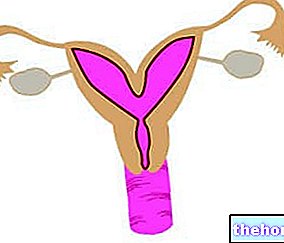Generality
The anovulatory cycle (or anovulation) is a dysfunction of the menstrual cycle, characterized by the "absence of" ovulation.
Anovulation may be suspected in the case of irregular menstrual cycles (both in quantity and duration) or not associated with the typical symptoms of the ovulatory phase (such as breast tenderness, abdominal swelling or mood changes).

Anovulation occurs most frequently during adolescence and in the climacteric. In addition to the state of premenopause, one of the most common causes of the absence of ovulation is the polycystic ovary syndrome. However, the problem can also be caused by hyperprolactinemia, hypothyroidism and other pathologies that cause anovulatory amenorrhea (including alterations functions of the hypothalamic-pituitary-ovarian axis, early ovarian failure and ovarian tumors).
The diagnosis of anovulatory cycles is confirmed by measuring hormone levels in the blood and performing a pelvic ultrasound.
The treatment of anovulation is aimed at the triggering causes. In the absence of pathologies, anovulatory cycles can represent transitory conditions.
What's this
The anovulatory cycle consists in the "absence of" ovulation (ie in the failure to release fertilizable eggs by the ovary) and in the failure of the corpus luteum to form during one or more menstrual cycles.
Anovulation can be transient or chronic, remembering that:
- A menstrual cycle can be defined as anovulatory only when it has ended;
- Having two or three anovulatory cycles a year is normal;
- An anovulatory cycle is a completely physiological phenomenon during infancy, pregnancy, breastfeeding and menopause.
If ovulation is irregular, but not completely absent, we speak of oligovulation. This situation is characterized by the lengthening of the rhythm of the menstrual cycle.




.jpg)























